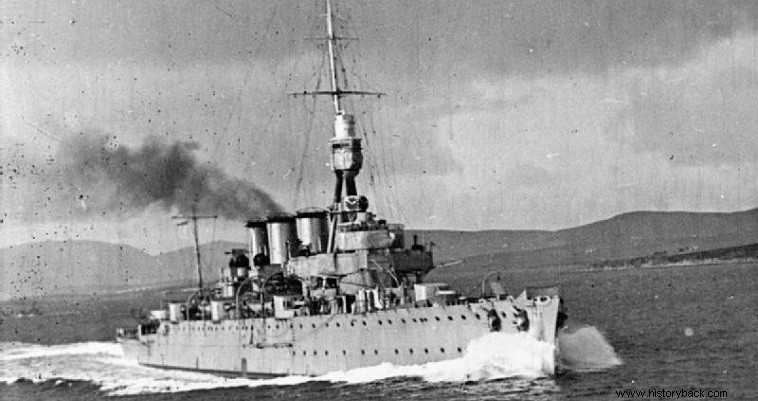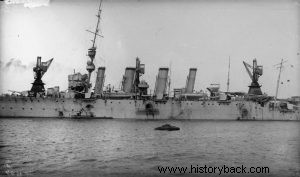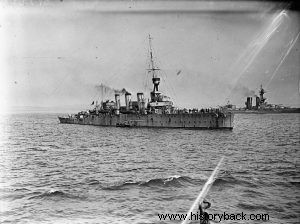
After the end of the Balkan Wars the defeated Ottoman Empire decided to strengthen its fleet. Its main rival at sea was Greece which decided to act accordingly, buying two American pro-dreadnought battleships and ordering two light cruisers and new destroyers from Britain, one battleship from Germany and one from France.
Unfortunately, of all these ships, only the two old battleships, "Lemnos" and "Kilikis" were surrendered. All others were not delivered due to the outbreak of World War I.
The two cruisers ordered in Britain were a development of the Town class light cruisers. However, the Greek ships differed from their British brothers mainly in armament. So instead of the nine 152mm guns that the British carried, the Greeks would carry 10 new 5.5in guns. (140mm), which, although they fired a slightly lighter projectile (39 kg, compared to 45), had better projectile characteristics and greater velocity.
The two Greek vessels would also carry two 12 pdr (76.2mm) guns in an anti-aircraft role. But since these guns were not available they were equipped with 3 pdr (47mm) Vickers guns. The boats would also carry two 21 in torpedo tubes. placed below the waterline.
Both had Parson steam turbines and 12 Yarrow boilers giving 31,000 hp to the "Katsonis" and 25,000 hp to the "Koundouriotis", allowing them to develop a maximum speed of 26.5 and 25.5 knots, respectively. The difference in horsepower and speed is due to the fact that the "Katsonis" only burned crude oil in its boilers - it carried 1,161 tons - while the "Koundouriotis" also burned coal - it carried 1,070 tons of coal and 352 tons of crude oil.
"Katsonis" began to be built on November 7, 1914, i.e. after the outbreak of the First World War. "Kounduriotis" had begun to be built on March 27, 1914 and was launched on January 18, 1915. "Katsonis" was launched on December 8, 1915. The cruisers had a length of 135.9 meters, a width of 15.2 meters and a draft of 4.9 meters. The "Katsonis" had a full displacement of 5,765 tons and the "Kounduriotis" of 5,845 tons.
The boats had adequate armor for their type. It had a 50mm thick armored belt and a maximum 40mm thick armored deck. The armored bridge was protected by 102mm thick armor.
However, the outbreak of war and the political developments in Greece did not allow their delivery. "Koundouriotis" was completed in May 1915 and "Katsonis" a year later. Both were handed over to the British Navy under the names "HMS Chester", the "Katsonis" and "HMS Birkenhead", the "Kountouriotis". Both fought under the British flag in the great naval battle of Jutland in 1916, with the "HMS Chester" being severely damaged by the German battle cruisers.
In 1920, there was the thought of selling it in Greece, but it was ultimately rejected and the boats ended up in the scrap yard. It is worth noting that a sailor of HMS Chester, 16-year-old John Cornwell, who, although badly wounded, continued to fight until his last breath and was posthumously awarded the Victoria Cross.

"Katsonis" as "HMS Chester" with visible wounds from German fire in Jutland. In the naval battle 29 crew members were killed and 49 wounded.

"Kountouriotis" as "HMS Birkenhead".
